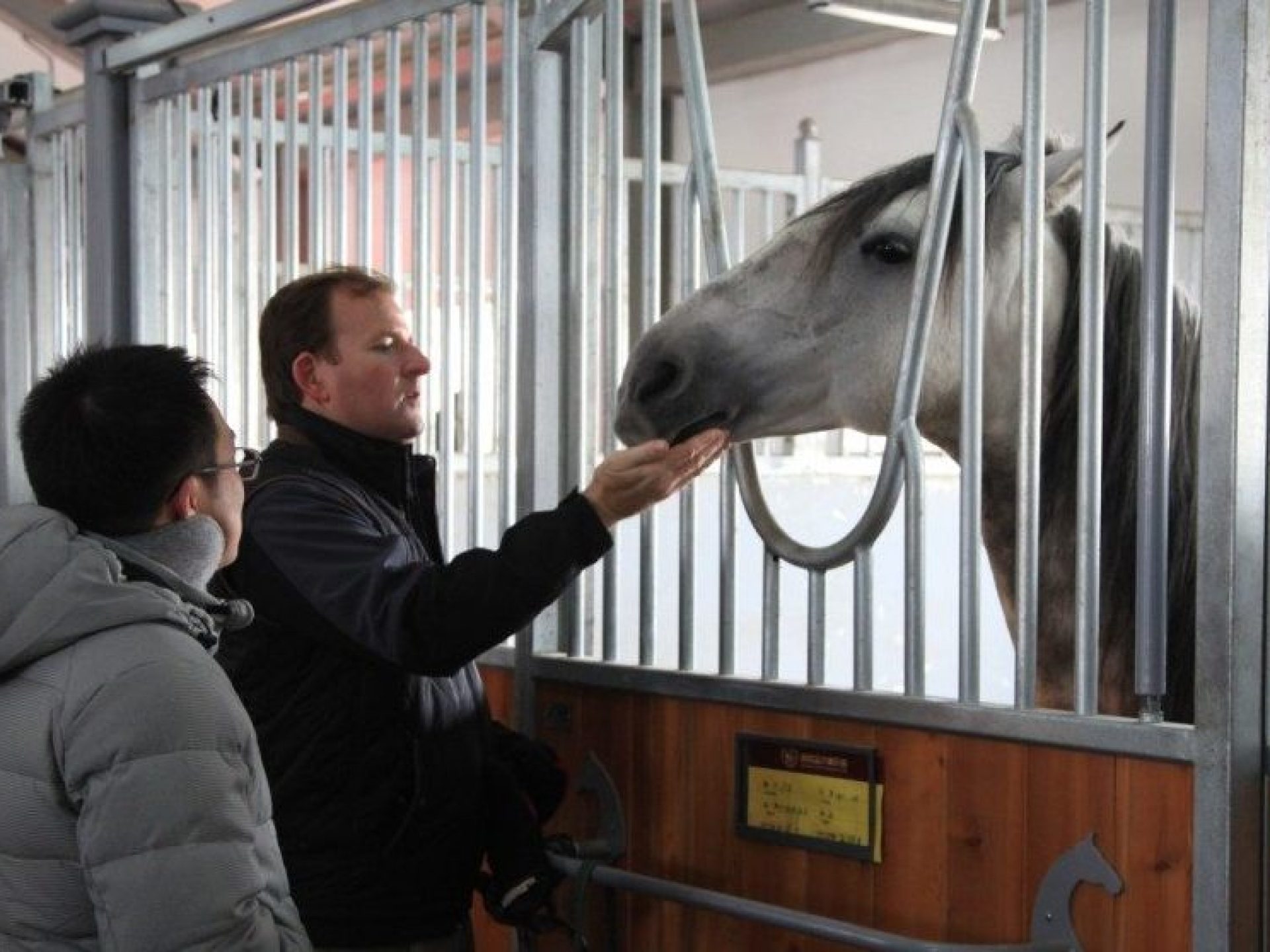February 12, 2018
Renewing the Bond Between Man and Horse in China

Mankind loves horses. While our domestic relationship with the horse is over 5,000 years old, evidence of our fascination dates back tens of thousands of years to Palaeolithic cave paintings. Go into any child’s room, and you will find dolls of ponies with well-tended manes, or rugged figures of cowboys and Indians, both riding horses.
The unique ability of the human to ride a horse may set the relationship apart from any other relationship with domesticated animals. In his poem The Horses, Edwin Muir suggests that it is the “free servitude” they offer mankind, pulling our plows and bearing our loads, which “still can pierce our hearts.” Cultures throughout the world repay this bond through references and recognition in language, music, poetry and art. In the English language alone we see references to horses in the names of cars, and in phrases like “horseplay,” “horsepower” and “free rein.”
Our relationship in the developed world, however, is more accurately described by another line in Muir’s poem as a “long-lost archaic companionship.” This not the case with our friends in the Far East. We are currently working on several projects in North China and it is evident that the culture still celebrates the deep bond between horse and man.
The Mongolians traditionally lead a pastoral, nomadic lifestyle, defined by animal husbandry. This is not surprising because many people in the region herd horses, as well as goats, sheep, cattle and camels to provide food, dairy products, transportation and wool. There is a popular Mongolian saying that “a nomad is born in the saddle.”
Horse references and imagery are prevalent in the region. When respecting or welcoming someone, you may hear someone ask “have you ridden well?” Or when going to the toilet, they simply say they are “going to see my horse.”
While sharing a traditional meal, you will be serenaded by the sounds of the horse head fiddle. This two-stringed instrument is a shrine to the equestrian spirit. The top of the neck is carved into the shape of a horse’s head, while one string is made with130 hairs from a stallion’s tail and the other with 105 hairs from the Mare’s tail.
Horses and people depend on each other, so there is a mutual respect between them that runs deep in Mongolian civilization. 5,000 years’ worth of understanding and security, forged in one of the harshest environments on earth, gives an unmatched authenticity and profundity to the bond between man and animal.
In China and Mongolia, this relationship is neither long-lost nor archaic. People and horses are working and living side by side. But we see a desire to further extend the bond from work, transportation and food, to one of recreation, education and sport, which will have greater economic value than the former.
Our Chinese clients are true stewards of the bond between man and horse and are passionate about celebrating the rich horse culture in China and Inner Mongolia. One of our clients hosts an annual equestrian festival in the cities of Ordos and Dalate, combining equestrian themed entertainment with international caliber competition. The City of Ordos’ name means “palace complex,” referencing Ghengis Khan’s eight white yurts and the tribe that guarded his tomb. The word ordo also is a Mongolian term for camp, or horde, which has strong nomadic influences.
Through the development of modern equestrian clubs, these clients are bringing together the most influential modern horse cultures of the world, showcasing equestrianism as an important modern necessity and lifestyle. Of these the oldest and most deeply rooted is China and Mongolia, followed by Europe, South America and the American West, respectively. These private developments have already proven to be catalysts for the horse industry in North China. In June, Populous was commissioned by the Dalate Regional Government to develop the control master plan for a 300 square kilometer equestrian industry development zone. This development region will focus on key components of building a sustainable horse industry, including:
– Horse breeding research, development and commerce
– Horse import/export centre
– Equestrian Education through university level
– Development of Equistructure in China to support a rapidly growing modern horse industry
– Light industry and national trade centre related to equine goods and services
– Creation of a global destination for equestrianism and equitourism
Horses have helped us tame the wilderness and build empires. They have been there to support our survival and overcome struggles. It is important to continue to celebrate this companionship and honor the strong bond between man and horse, not only in Mongolia and China, but the world over. “Our life is changed” by horses, Muir states, “their coming, our beginning.”
Lorem ipsum dolor sit amet consectetur, adipisicing elit. Non facere corporis et expedita sit nam amet aut necessitatibus at dolore enim quis impedit eius libero, harum tempore laboriosam dolor cumque.
Lorem, ipsum dolor sit amet consectetur adipisicing elit. Illo temporibus vero veritatis eveniet, placeat dolorem sunt at provident tenetur omnis, dicta exercitationem. Expedita quod aspernatur molestias eum? Totam, incidunt quos.


